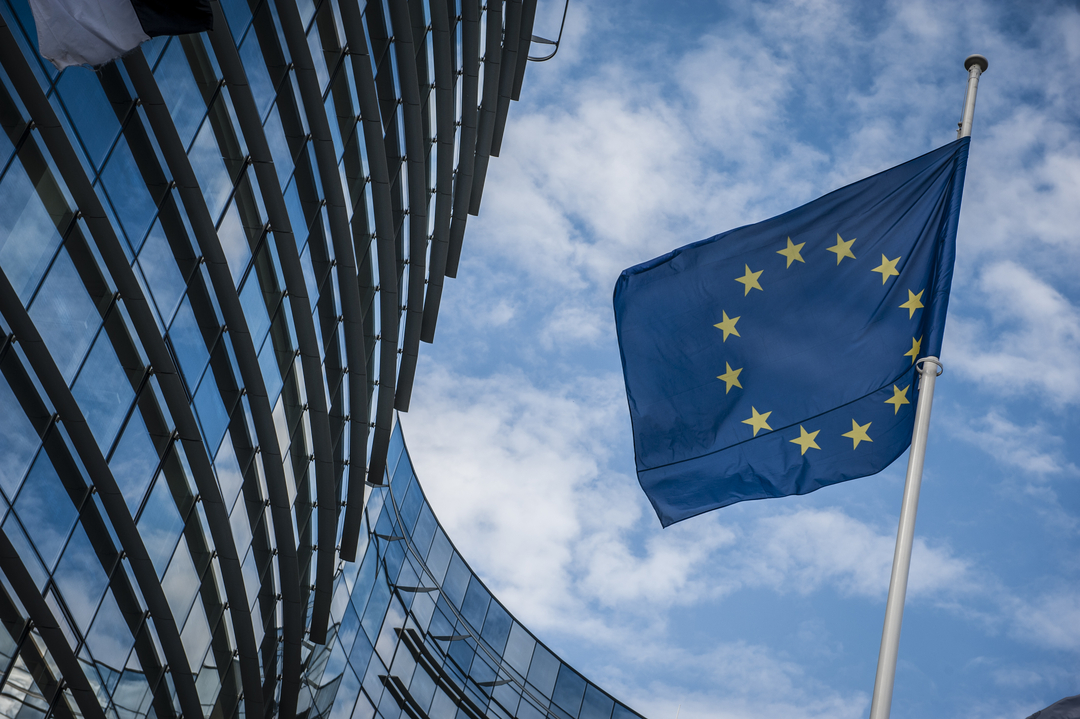EU Stablecoin Approval Marks New Era, but Regulatory Challenges Loom
20.02.2025 10:00 2 min. read Alexander Stefanov
The European Union has granted approval to 10 companies, allowing them to issue stablecoins under the new Markets in Crypto-Assets (MiCA) framework.
This marks a major step in the EU’s regulatory approach to the crypto space.
Among the firms that received approval are industry players such as Circle, Crypto.com, and Societe Generale, along with others like Banking Circle and Stable Mint. Together, these firms have launched several stablecoins pegged to the euro and US dollar, contributing to the expansion of digital assets in the region. However, Tether, the issuer of the widely circulated USDT stablecoin, is notably absent from the approved list, drawing attention to the complexities of navigating the EU’s regulatory environment.
While some praise the EU for its clarity on crypto regulation, there are concerns that these rules could stifle innovation. Critics argue that Europe’s regulatory framework might create obstacles for companies in the region, which could hinder growth compared to less regulated markets. Steve Hanke, an economist, pointed out that excessive regulation may contribute to Europe’s lagging economic growth.
The implementation of MiCA has already led to changes in the crypto market, with platforms beginning to delist USDT and other stablecoins that don’t meet the new standards. Tether, in response, expressed frustration over the swift delisting actions, calling them premature and insufficiently explained.
Experts have also raised concerns that the MiCA regulations may encourage some crypto firms to move operations outside the EU to avoid the costly compliance requirements. However, with regulatory uncertainty still lingering in the UK post-Brexit, it seems unlikely that companies would relocate there, leaving many crypto firms facing a difficult decision about where to operate.
As the MiCA framework unfolds, its impact on Europe’s crypto landscape will likely continue to evolve, with companies navigating both the challenges of regulation and the potential for future growth in alternative markets.
-
1
Kazakhstan to Establish State Crypto-Reserve Under Central Bank Oversight
30.06.2025 17:00 2 min. read -
2
Arizona Governor Vetoes Bill, Related to State Crypto Reserve Fund: Here Is Why
02.07.2025 16:00 2 min. read -
3
Crypto Advocates Back Sen. Cynthia Lummis’ Push to Reform Digital Asset Tax Rules
01.07.2025 10:00 2 min. read -
4
SEC Explores New Fast-Track Process for Token-Based ETFs
02.07.2025 14:00 2 min. read -
5
Germany’s Largest Banking Group Sparkassen to Offer Crypto Trading by 2026
01.07.2025 8:00 2 min. read
Donald Trump to Unlock $9 trillion in Retirement Savings for Crypto and Gold Investments
President Donald Trump is preparing to sign a sweeping executive order this week that could radically reshape the way Americans invest for retirement.
U.S. House Passes Sweeping Clarity and GENIUS Acts
The U.S. House of Representatives has passed a trio of groundbreaking cryptocurrency bills aimed at establishing comprehensive federal oversight of digital assets, including stablecoins and broader crypto market infrastructure.
House Clears Path for Landmark Crypto Bills: Vote Set for Thursday
The U.S. House of Representatives has advanced three major cryptocurrency bills after passing a critical procedural vote late Wednesday night.
Thailand Launches National Crypto Sandbox
Thailand’s Securities and Exchange Commission (SEC) and the Bank of Thailand have introduced a new nationwide cryptocurrency sandbox program aimed at foreign tourists.
-
1
Kazakhstan to Establish State Crypto-Reserve Under Central Bank Oversight
30.06.2025 17:00 2 min. read -
2
Arizona Governor Vetoes Bill, Related to State Crypto Reserve Fund: Here Is Why
02.07.2025 16:00 2 min. read -
3
Crypto Advocates Back Sen. Cynthia Lummis’ Push to Reform Digital Asset Tax Rules
01.07.2025 10:00 2 min. read -
4
SEC Explores New Fast-Track Process for Token-Based ETFs
02.07.2025 14:00 2 min. read -
5
Germany’s Largest Banking Group Sparkassen to Offer Crypto Trading by 2026
01.07.2025 8:00 2 min. read


